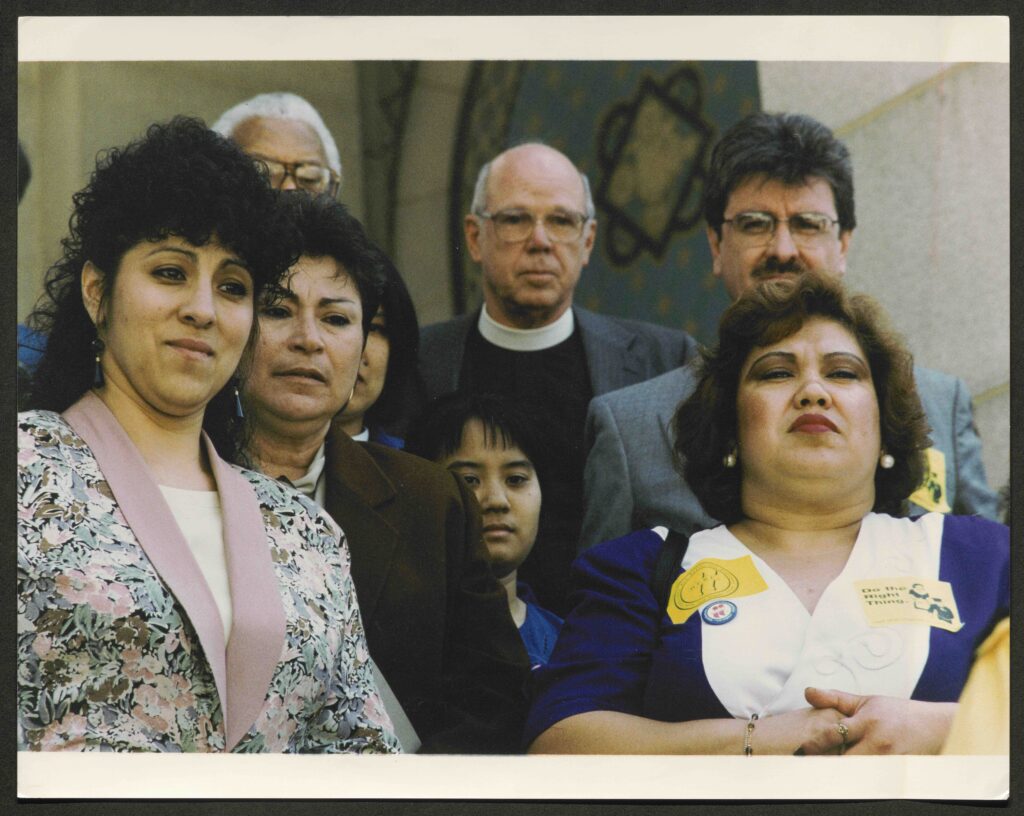In 1995, UNITE! (Union of Needle Trades and Industrial Textile Employees, formed after a merger of the ILGWU and ACTWU) launched a campaign against Guess? Jeans, the largest apparel manufacturer in Los Angeles. Known for its distinctive stone-washed jeans, Guess? operated its own retail stores and made down-market lines sold at department stores, averaging over $500 in annual sales. UNITE estimated that some 5000 workers in Los Angeles cut and sewed garments for Guess? , including around 1000 employed at the Guess? warehouse. Their campaign relied on creative new tactics, including “hot shop” strikes at two Guess? subcontractors and direct actions at retail stores targeting the Guess? brand. Their media strategy included videos like this one, where Guess? workers shared their testimonios and rallied support for the union drive.
UNITE’s campaign against Guess?, while achieving some victories for workers, drained the union of resources and ended with the company relocating most of its production to Mexico. As UNITE organizer Cristina Vásquez described, the campaign was “like fighting an octopus” – when the union made progress in one of its subcontracted shops, Guess? would sever their relationship to the subcontractor and deny any liability for the conditions in the shop. The Guess? campaign would be the last of UNITE’s major union drives, forcing garment workers and their allies to pursue new methods of establishing joint liability in the industry.
A Spanish language version of the video is available here.
Both videos from the Steve Nutter Collection, IRLE.

![a crowd of religious leaders and workers gathered in Los Angeles City hall. On the right, a priest in his white collar and black suit holds a large sign reading "Stop Opposing the Living Wage Ordinance." On the left, a man stands wearing a costume, make up and a wig, posing while reading from a large book in his hands. He is dressed as the ghost of Jacob marley, wrapped in chains. In the background of the image, people hold signs reading "No Trabajo 40 Horas Para Quedarme...[illegible]" "Don't be a Scrooge, work deserves living wages," and other messages.](https://memorywork.irle.ucla.edu/wp-content/uploads/oversize_001-copy-1024x812.jpeg)
